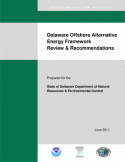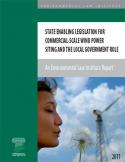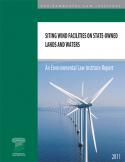
Research Reports
ELI publishes Research Reports available for free download that present the analysis and conclusions of the policy studies ELI undertakes to improve environmental law and policy. These reports contribute to education of the profession and disseminate diverse points of view and opinions to stimulate a robust and creative exchange of ideas. Those publications, which express opinions of the authors and not necessarily those of the Institute, its Board of Directors, or funding organizations, exemplify ELI’s commitment to dialogue with all sectors.
This report explores Delaware’s framework for managing offshore alternative energy.
Read More >
Wind power currently provides less than 2 percent of the nation’s electric power, but the U.S. Department of Energy plans for an increase to 20 percent within the next 20 years. Wind energy is a growing industry sector with the potential to transform much of the nation’s industrial and energy economy, while avoiding harmful greenhouse gas emissions.
Read More >
Siting Wind Facilities on State-Owned Lands and Waters examines opportunities that states have explored for siting commercial-scale wind facilities on lands and waters that are government-owned. State trust lands and forests and the beds of rivers and the Great Lakes offer potential opportunities for wind power that can help advance state renewable energy goals. States own large parcels that may facilitate siting commercial-scale facilities; they also control lands that may be intermingled with private or federal lands suitable for wind development.
Read More >